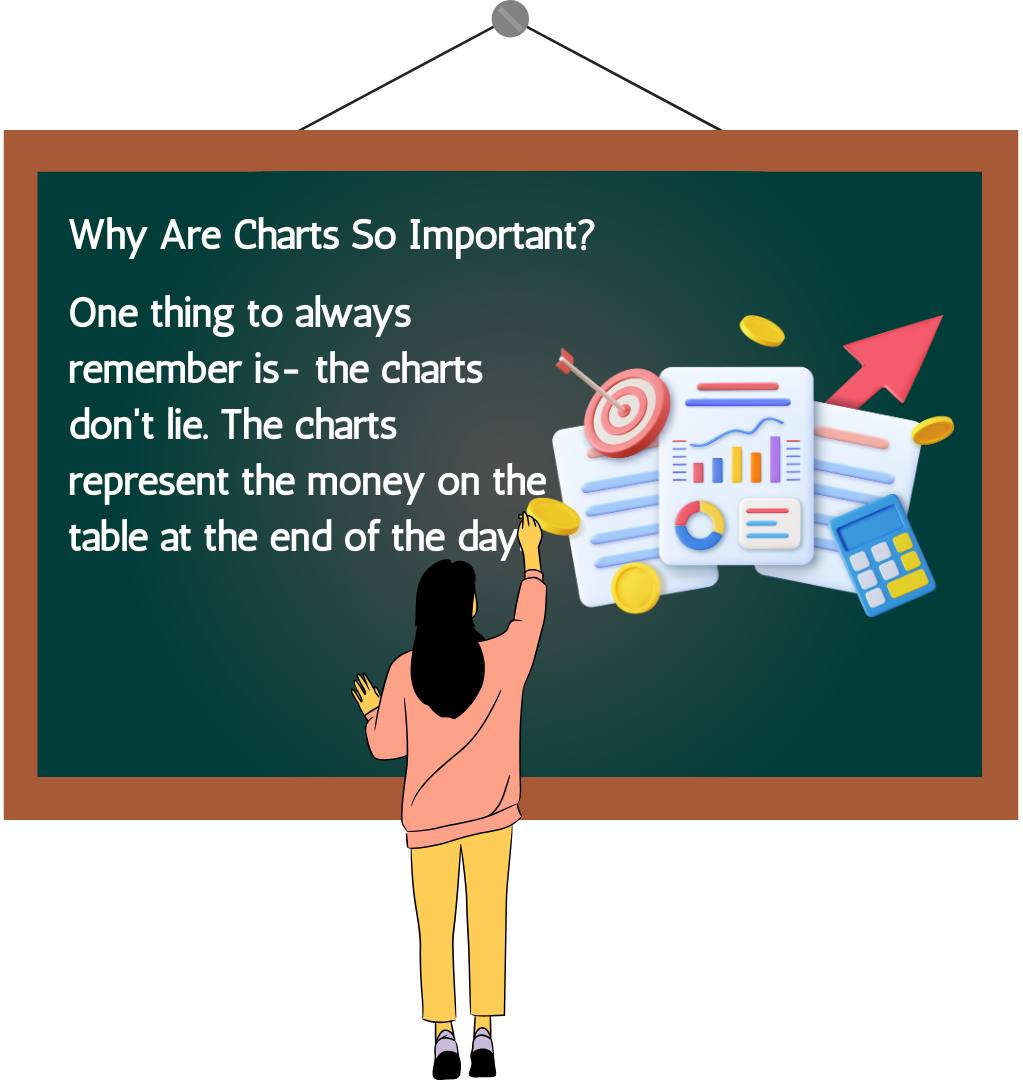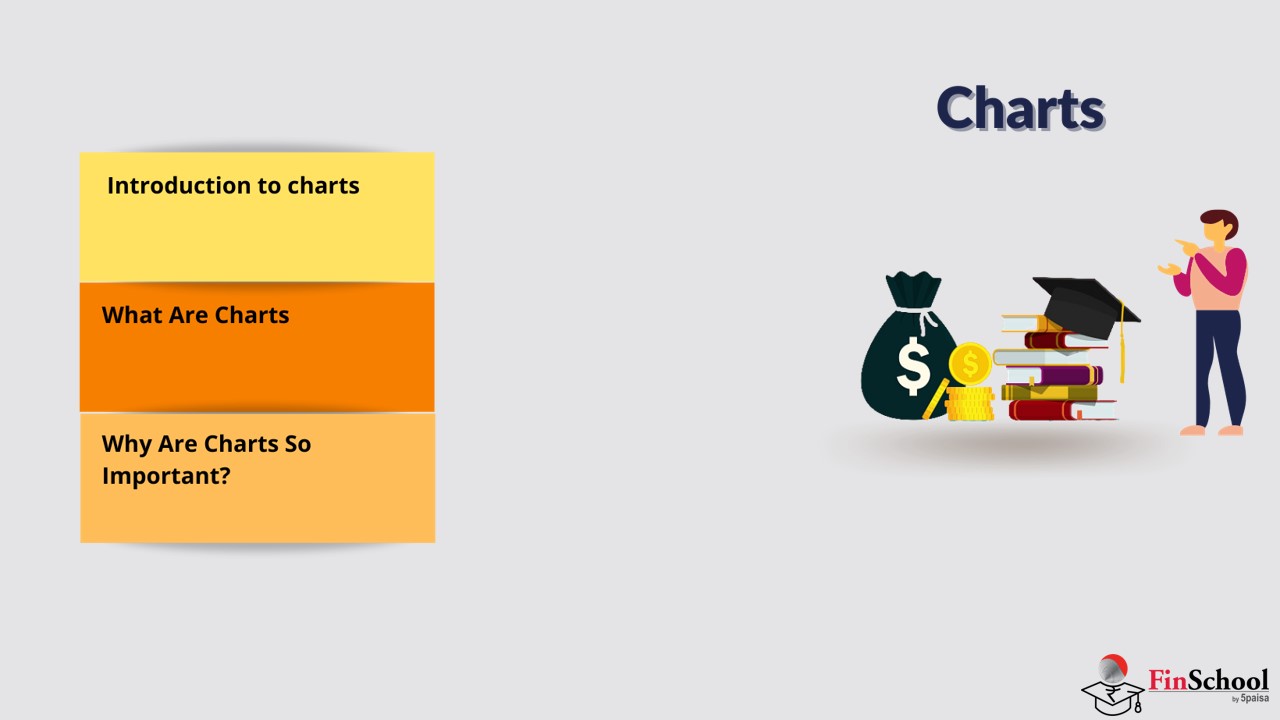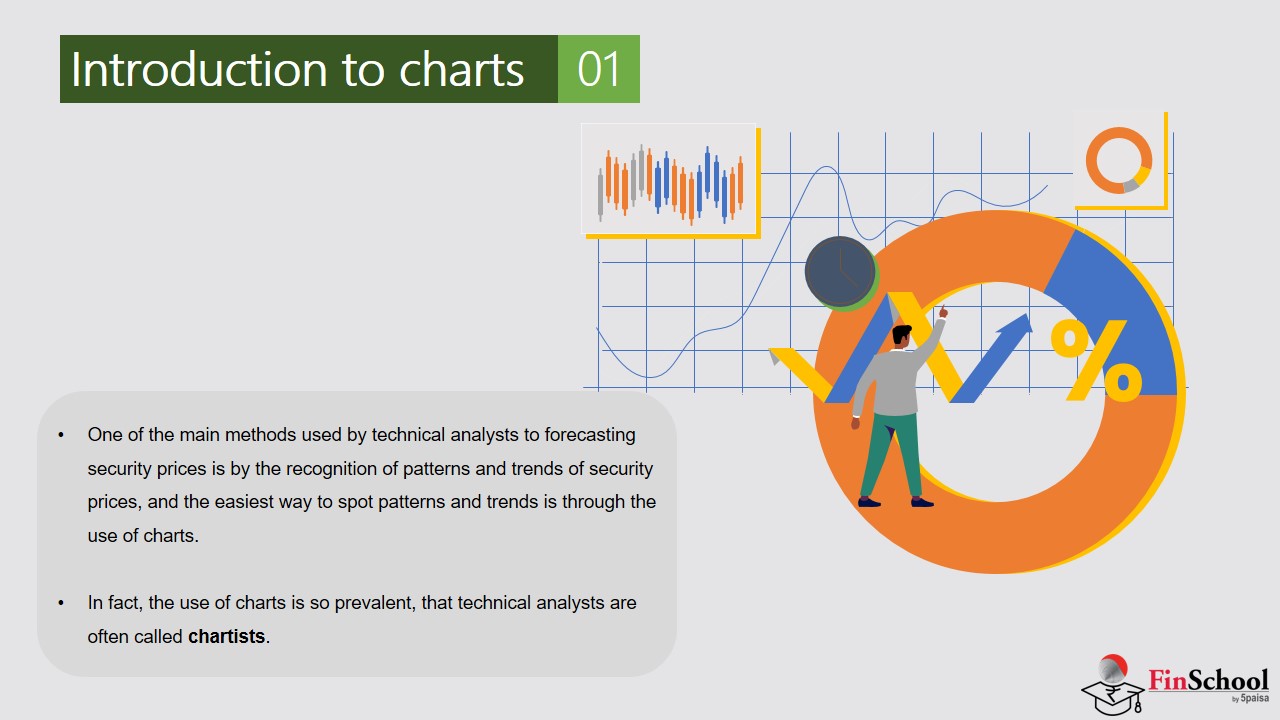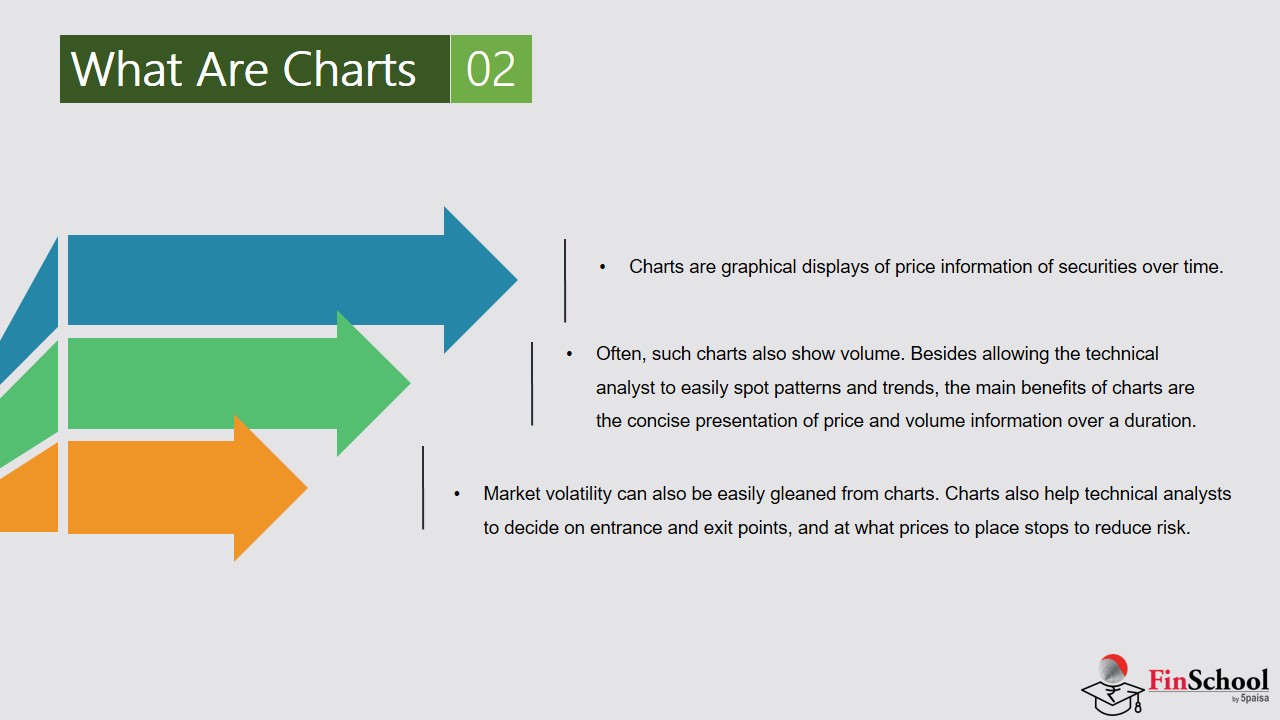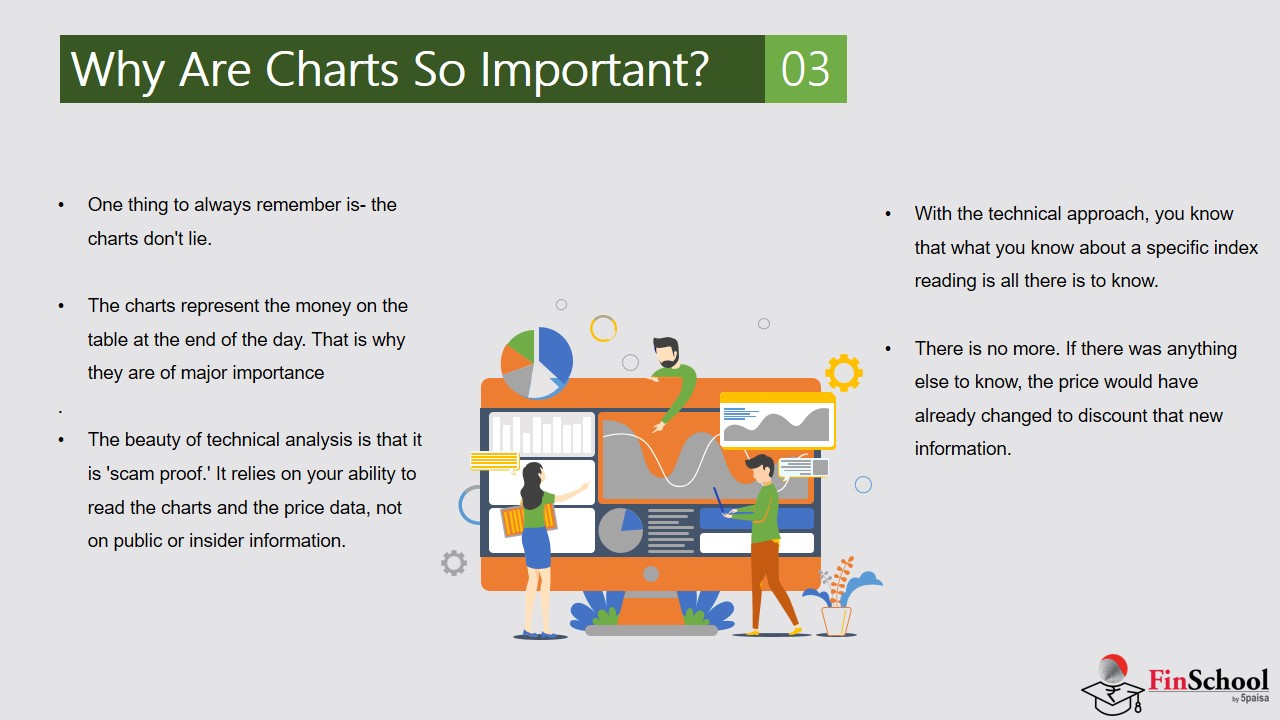- Introduction To Technical Analysis
- Charts
- Line & Bar Charts
- Candlestick Patterns
- Support, Resistance & Trend
- Trend Lines
- Understanding Chart Patterns & Head & Shoulder In Detail
- Double Top & Bottom Pattern In Stock Market - Explained
- Saucers & Spikes
- Continuing Patterns
- Know What Is Price Gaps & Its Types In Stock Market
- Study
- Slides
- Videos
2.1 Introduction
One of the main methods used by technical analysts to forecasting security prices is by the recognition of patterns and trends of security prices, and the easiest way to spot patterns and trends is through the use of charts. In fact, the use of charts is so prevalent, that technical analysts are often called chartists. Originally, charts were drawn by hand, but most charts nowadays are drawn by computer.
2.2 What are charts
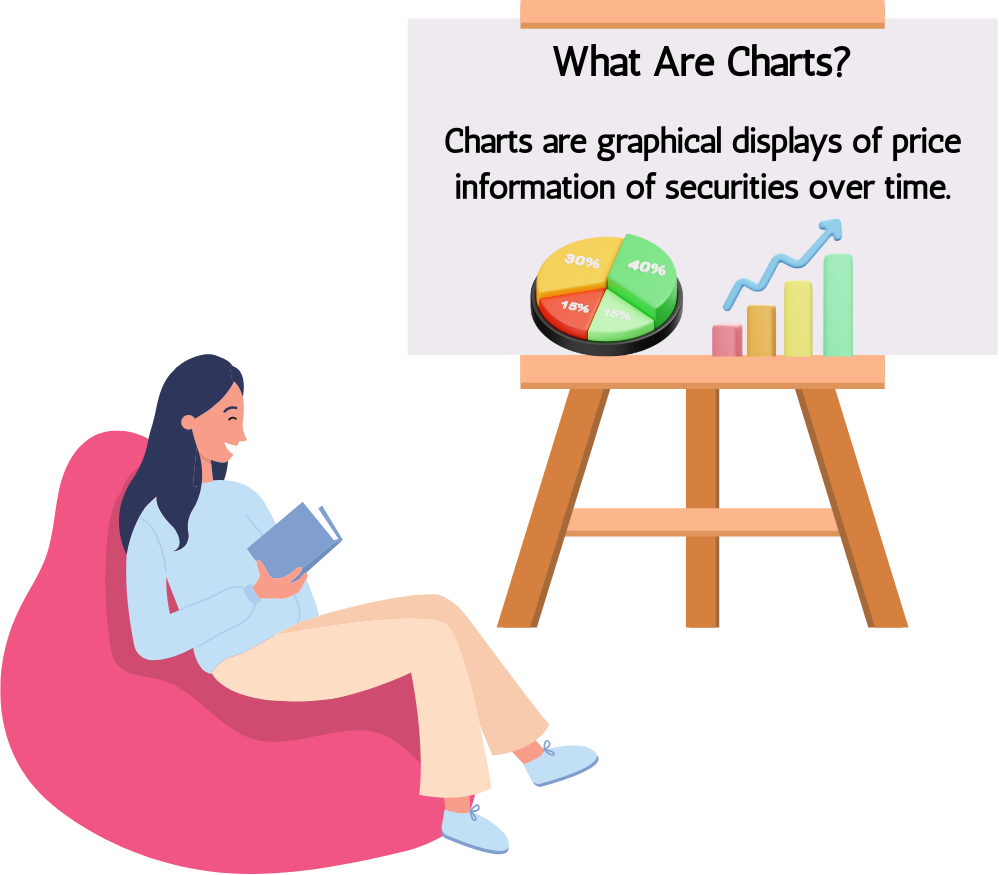
-
Charts are graphical displays of price information of securities over time.
-
Often, such charts also show volume. Besides allowing the technical analyst to easily spot patterns and trends, the main benefits of charts are the concise presentation of price and volume information over a duration, which can be used by fundamentalists to study how the market has reacted to specific events.
-
Market volatility can also be easily gleaned from charts. Charts also help technical analysts to decide on entrance and exit points, and at what prices to place stops to reduce risk.
The main chart types used by technical analysts are the line chart, bar chart, candlestick chart, and point-and-figure charts. Charts can also be displayed on an arithmetic or logarithmic scale. The types of charts and the scale used depends on what information the technical analyst considers to be most important, and which charts and which scale best shows that information.
Consider the following: A rising price reflects bullish fundamentals, where demand exceeds supply; falling prices would mean that supply exceeds demand, identifying a bearish fundamental situation. These shifts in the fundamental equation cause price changes, which are readily apparent on a price chart. The chartist is quickly able to profit from these price changes without necessarily knowing the specific reasons causing them. The chartist simply reasons that rising prices are indicative of a bullish fundamental situation and that falling prices reflect bearish fundamentals.
2.3 Why Are Charts So Important?
One thing to always remember is- the charts don’t lie. The charts represent the money on the table at the end of the day. That is why they are of major importance.
The beauty of technical analysis is that it is ‘scam proof.’ It relies on your ability to read the charts and the price data, not on public or insider information. With the technical approach, you know that what you know about a specific index reading is all there is to know. There is no more. If there was anything else to know, the price would have already changed to discount that new information. Nobody can con you and you can be sure nothing has gotten by you. The price is the price. Follow the money.
Charts are a widely used tool in trading and investing to quickly see the past performance of the stock, the highs, the lows, trends, moving averages, trading volume, and much more. Charts really are the ‘footprint of money.’ What some talking head on a financial news network might say becomes immaterial when you can look at a chart and see what the ‘money’ is saying. That’s what is important. Seeing the money on the table and understanding by the propensity of evidence who was buying and selling and how serious they were.
It is also very true that ‘history repeats itself.’ Meaning, if a stock has historically been unable to penetrate a resistance level on the upside, then there is a reasonable probability that it will repeat that problem again. And looking at the flip side of that scenario, if the stock has historically held at a support level during a decline, and refused to fall farther, then there is the same reasonable probability that it will repeat that in the future.
